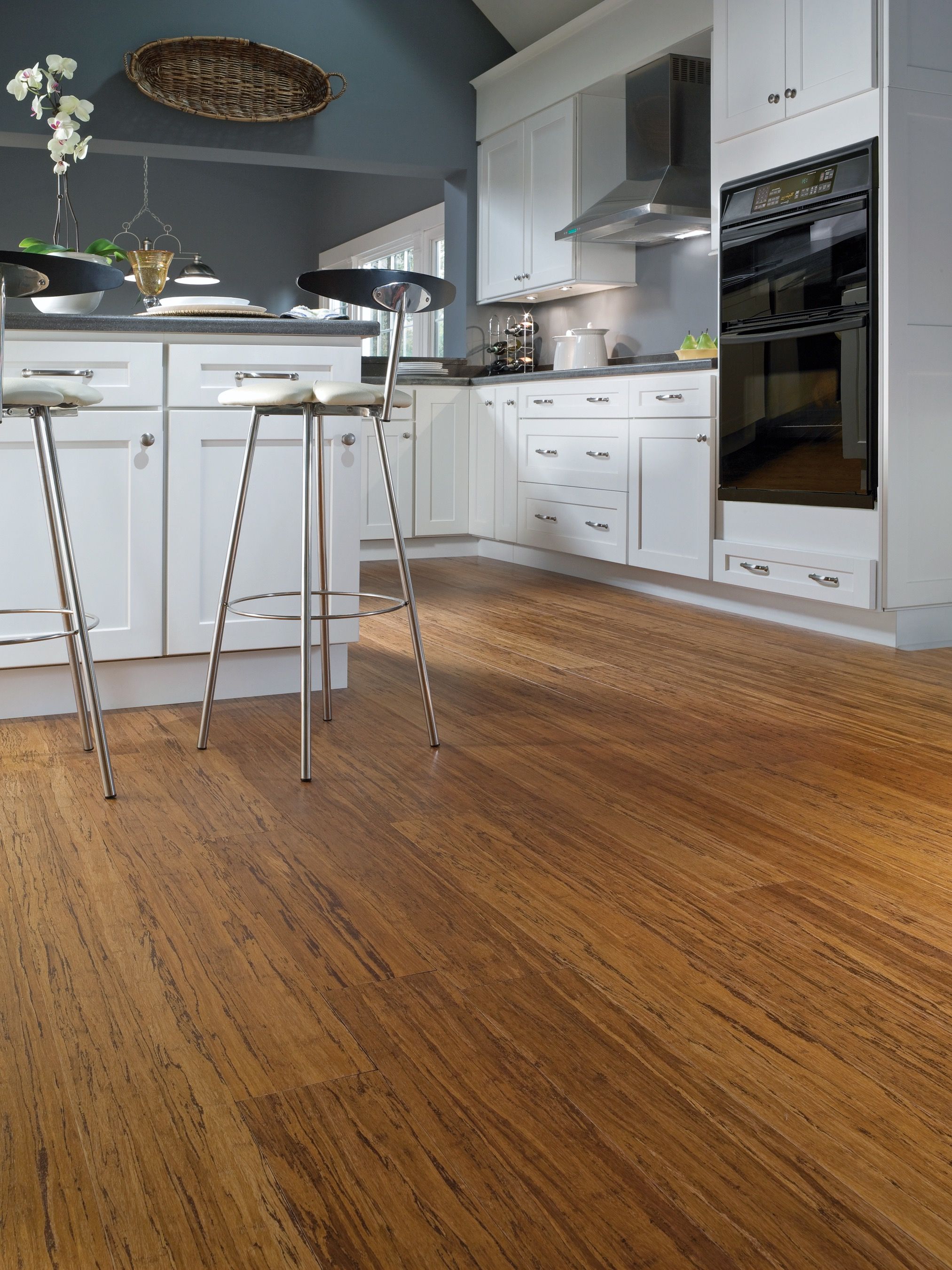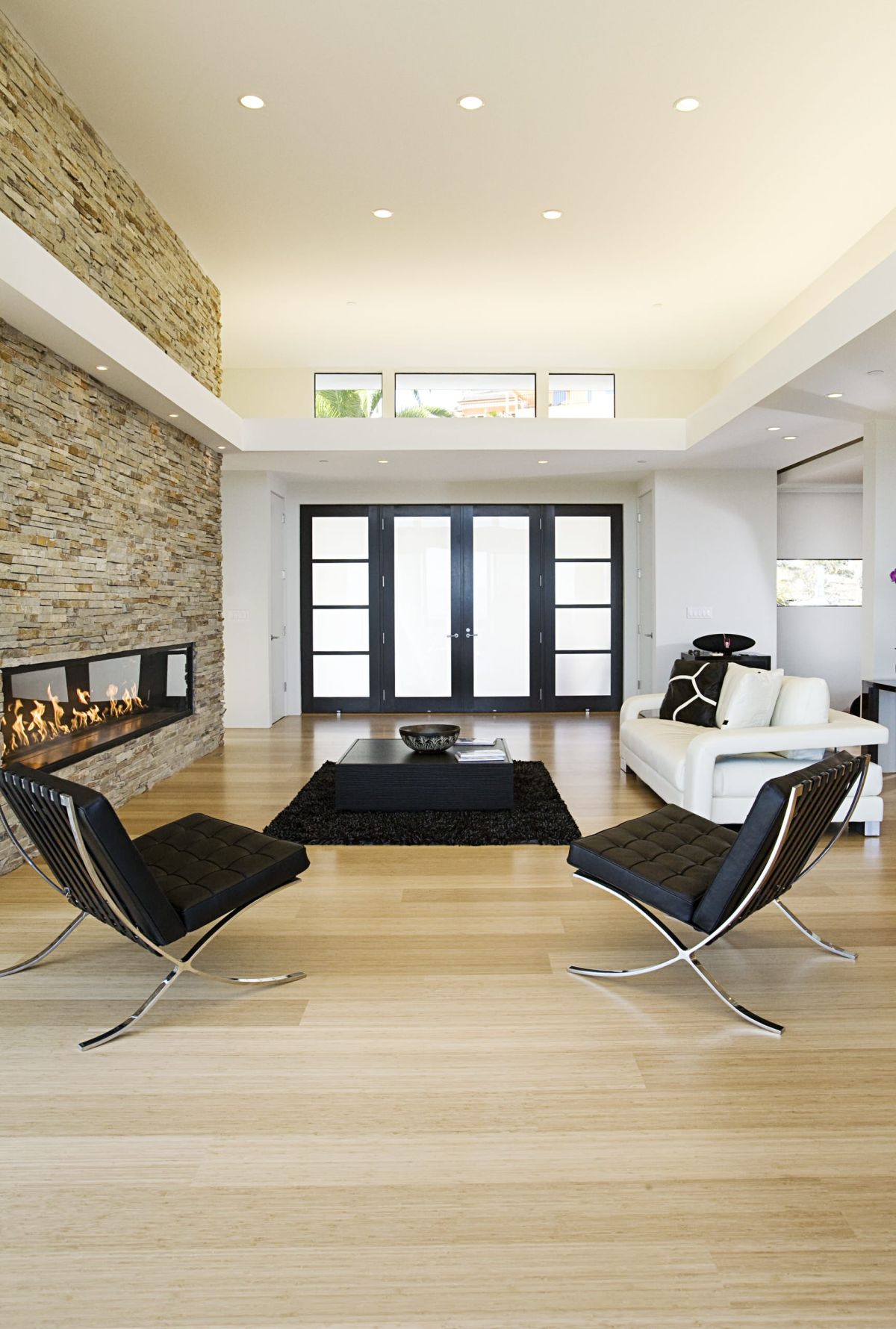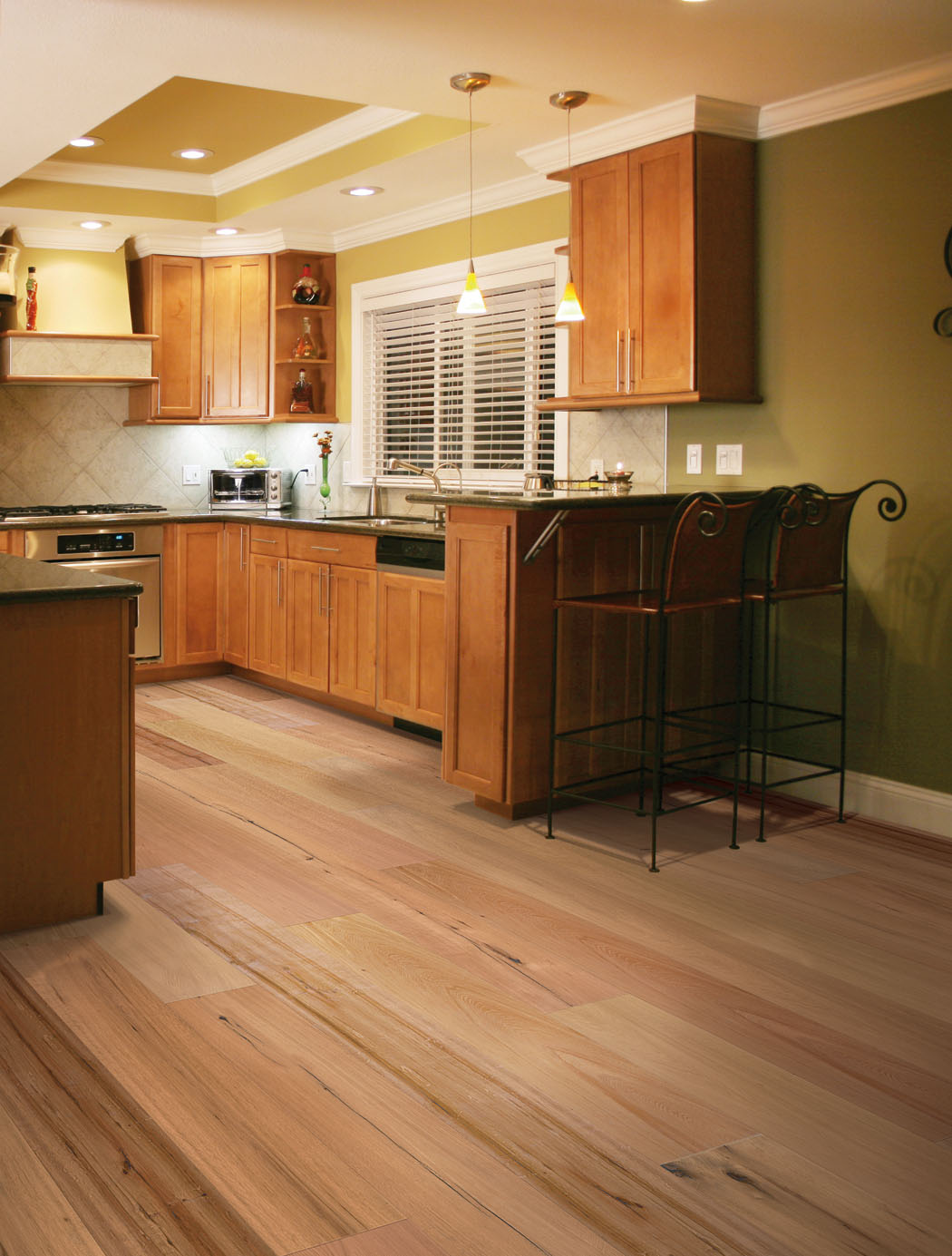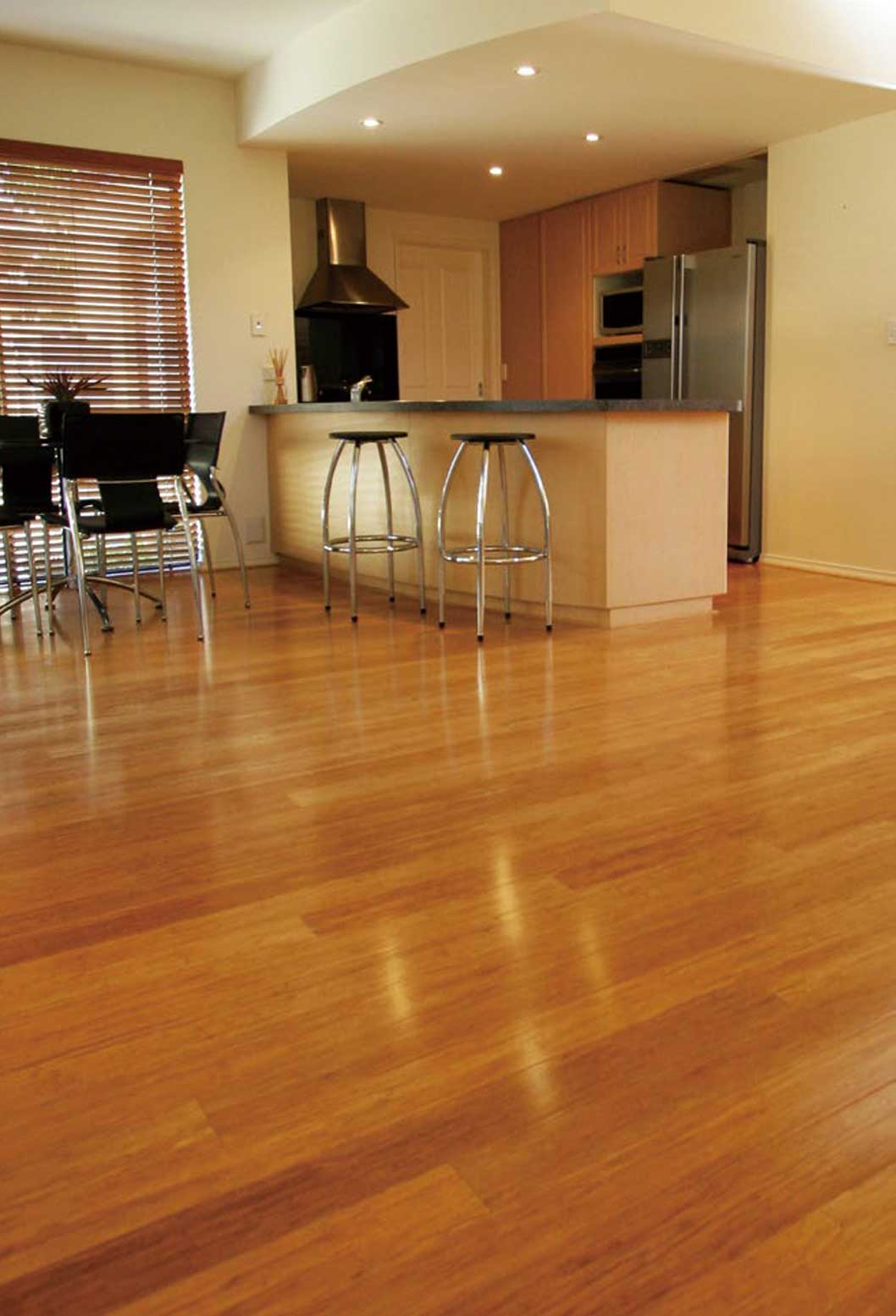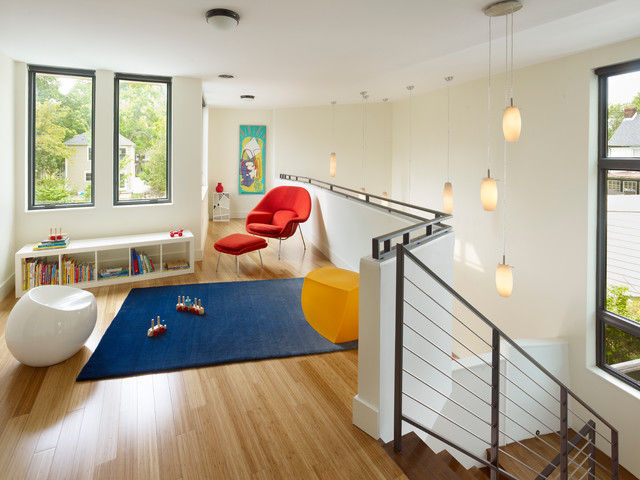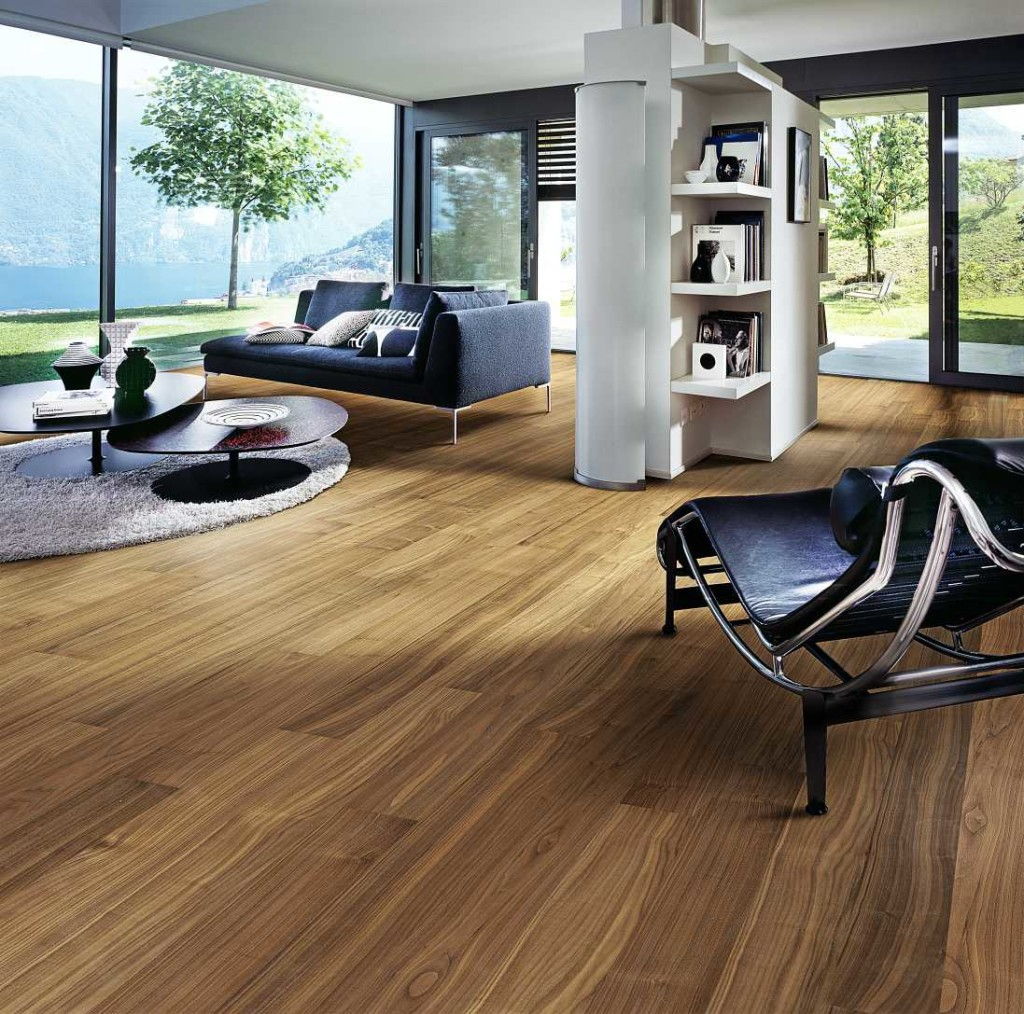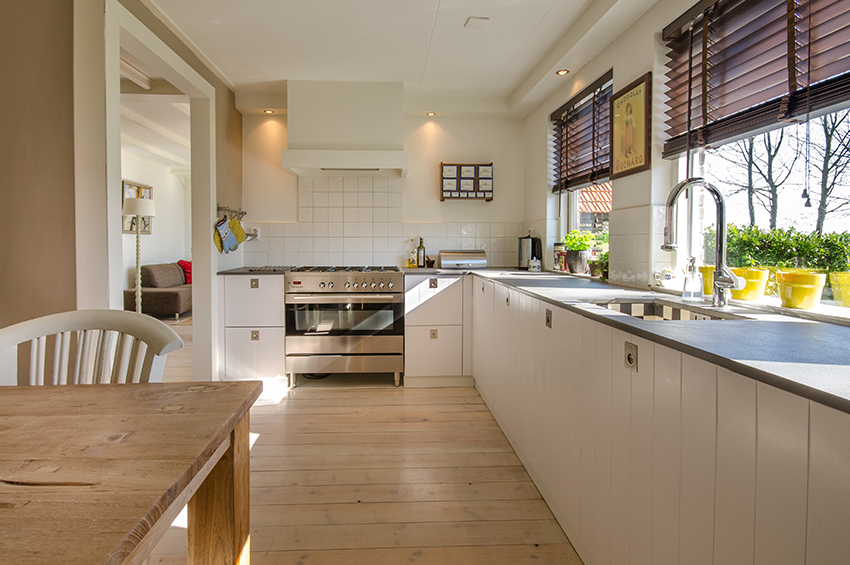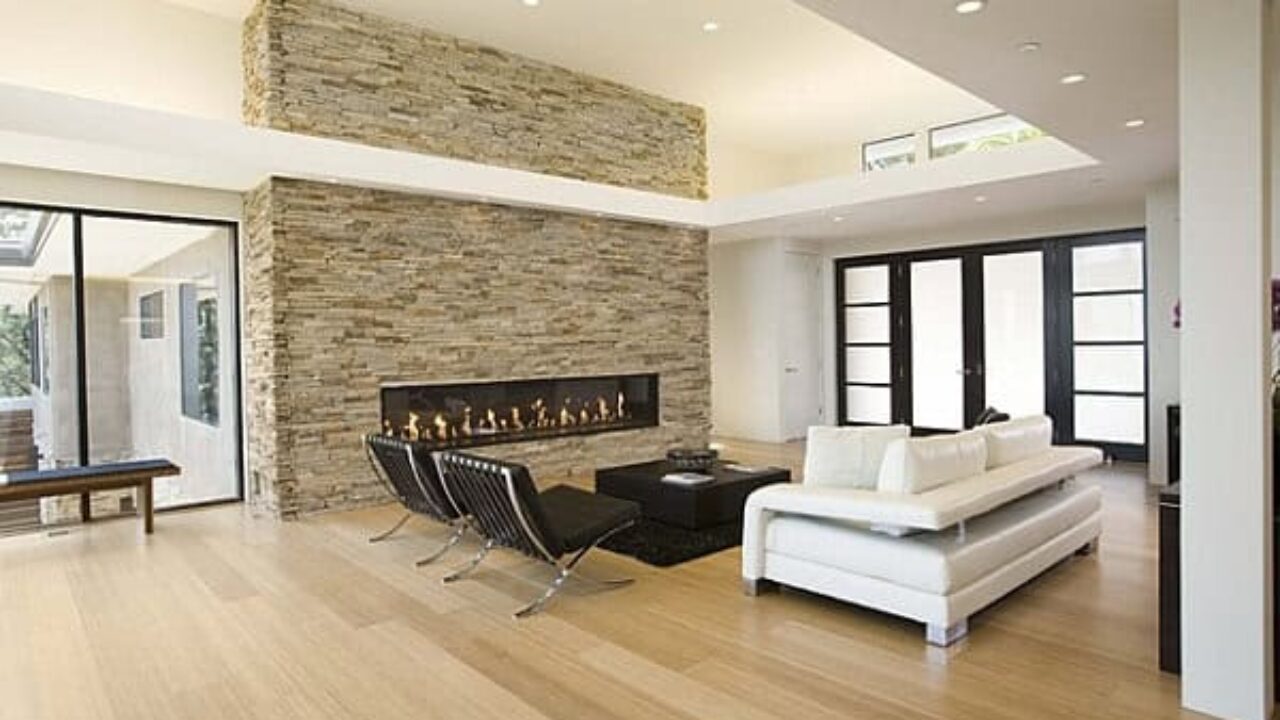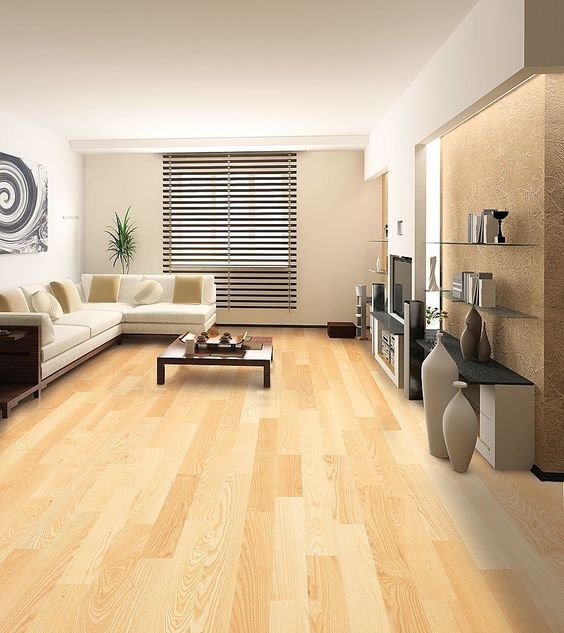The Rise of Bamboo Flooring: A Modern Flooring Solution
Bamboo flooring has gained immense popularity in recent years as a stylish, eco-friendly alternative to traditional hardwood floors. Its rise in modern interior design is attributed to its aesthetic appeal, durability, and environmental benefits. Here’s a closer look at how bamboo flooring has become a modern flooring solution.
- Aesthetic Appeal: Bamboo flooring offers a sleek, contemporary look that suits a variety of interior styles. Its clean lines and smooth finish make it an attractive option for modern homes. Bamboo comes in various tones and grain patterns, allowing homeowners to choose a style that complements their decor. Whether you prefer a natural, light bamboo or a darker, carbonized look, bamboo flooring provides a chic and modern aesthetic.
- Durability and Strength: One of the key reasons for the rise of bamboo flooring is its impressive durability. Bamboo is a strong material that can withstand heavy foot traffic and daily wear and tear. Strand-woven bamboo, in particular, is known for its exceptional hardness, making it suitable for high-traffic areas. Its resistance to dents and scratches makes it a practical choice for busy households with children or pets.
- Versatility in Design: Bamboo flooring is incredibly versatile, fitting seamlessly into various design schemes. Its natural beauty enhances both minimalist and eclectic interiors. Bamboo can be used in a range of settings, from urban lofts to suburban homes, thanks to its ability to blend with different architectural styles. It can be installed in different patterns, such as horizontal, vertical, or strand-woven, each offering a unique look.
- Eco-Friendly Option: The environmental benefits of bamboo flooring have contributed significantly to its rise in popularity. Bamboo is a renewable resource that grows much faster than traditional hardwoods. It can be harvested within five to seven years, compared to the decades it takes for hardwood trees to mature. This rapid growth makes bamboo a sustainable choice for flooring, aligning with the growing demand for eco-friendly building materials.
- Cost-Effective Solution: Bamboo flooring is often more cost-effective than traditional hardwood flooring. Its affordability makes it accessible to a broader range of homeowners without sacrificing quality or aesthetics. While the initial cost of bamboo can vary depending on the type and quality, it generally offers a budget-friendly option for those looking to achieve the look of hardwood without the higher price tag.
- Advancements in Manufacturing: Advancements in bamboo manufacturing techniques have enhanced its performance and appeal. Modern bamboo flooring is treated to resist moisture and insects, making it suitable for various environments. The development of engineered bamboo flooring, which combines bamboo layers with a plywood base, offers increased stability and versatility in installation. These innovations have further solidified bamboo’s position as a modern flooring solution.

Key Benefits of Choosing Bamboo Flooring for Your Home
Bamboo flooring has become a preferred choice for many homeowners due to its numerous benefits. From sustainability to aesthetic versatility, bamboo flooring offers a range of advantages that make it an appealing option for modern homes. Here are the key benefits of choosing bamboo flooring:
Eco-Friendliness
Bamboo flooring is renowned for its environmental benefits. Bamboo is a highly renewable resource, growing to maturity in just a few years compared to decades for traditional hardwoods. This rapid growth cycle makes bamboo a sustainable option, reducing the impact on forests and contributing to eco-friendly building practices. By choosing bamboo, homeowners support sustainable forestry and reduce their carbon footprint.
Durability and Hardness
Bamboo flooring is exceptionally durable, particularly strand-woven bamboo, which is known for its hardness. This type of bamboo is made by compressing bamboo fibers under high pressure, creating a dense and sturdy material. Bamboo’s natural strength makes it resistant to wear, dents, and scratches, making it suitable for high-traffic areas and homes with pets or children. Properly maintained, bamboo flooring can last for decades.
Aesthetic Versatility
Bamboo flooring offers a variety of aesthetic options to suit different tastes and interior styles. It comes in various finishes, including natural, carbonized, and stained, allowing homeowners to choose from a range of colors and textures. Whether you prefer a light, airy look or a darker, richer tone, bamboo flooring can complement any decor. Its clean lines and modern appeal enhance the visual appeal of any space.
Ease of Maintenance
Bamboo flooring is relatively easy to maintain compared to other types of flooring. Regular sweeping and occasional mopping are usually sufficient to keep it looking its best. Bamboo’s natural resistance to moisture makes it less prone to warping or staining, although it’s still important to clean up spills promptly to prevent damage. Using appropriate cleaning products and avoiding harsh chemicals helps preserve the floor’s finish.
Allergy-Friendly
Bamboo flooring can contribute to a healthier indoor environment by reducing allergens. Unlike carpets, which can trap dust, pollen, and pet dander, bamboo floors do not harbor these particles. Regular cleaning of bamboo floors can help minimize allergens, making it an ideal choice for households with allergy sufferers or asthma.
Cost-Effectiveness
Bamboo flooring is often more affordable than traditional hardwood flooring, providing a cost-effective alternative that doesn’t compromise on quality or style. The price of bamboo flooring can vary based on the type and finish, but it generally offers good value for money. This affordability makes it an attractive option for budget-conscious homeowners looking to upgrade their flooring.
Types of Bamboo Flooring: Which Style Suits Your Space?
Bamboo flooring comes in several types, each with unique characteristics and aesthetic appeal. Understanding the different styles of bamboo flooring can help you choose the best option for your space. Here’s a breakdown of the main types of bamboo flooring:
Horizontal Bamboo Flooring
Horizontal bamboo flooring is made by stacking bamboo strips horizontally and then pressing them together. This method showcases the natural growth pattern of bamboo, including the nodes or “knuckles” that give bamboo its distinctive look. Horizontal bamboo flooring offers a warm, natural appearance and works well in both traditional and contemporary settings. It’s ideal for those who appreciate the natural beauty and texture of bamboo.
Vertical Bamboo Flooring
Vertical bamboo flooring is created by aligning bamboo strips vertically and then gluing them together. This method produces a more uniform and linear grain pattern, offering a sleek and modern look. Vertical bamboo has a subtle texture and is well-suited for minimalist or modern interiors. Its clean lines and consistent appearance make it a popular choice for contemporary spaces.
Strand-Woven Bamboo Flooring
Strand-woven bamboo flooring is made by shredding bamboo fibers, mixing them with adhesives, and compressing them under high pressure. This process creates a dense and durable material that is harder than most traditional hardwoods. Strand-woven bamboo has a unique, marbled appearance due to the mixing of fibers, giving it a distinct and sophisticated look. It’s highly resistant to dents and scratches, making it ideal for high-traffic areas.
Engineered Bamboo Flooring
Engineered bamboo flooring consists of a top layer of bamboo bonded to a plywood or fiberboard base. This construction enhances the floor’s stability and resistance to moisture, making it suitable for installation over concrete or in areas with varying humidity levels. Engineered bamboo offers the look of natural bamboo with added durability and is available in both horizontal and vertical grain patterns.
Carbonized Bamboo Flooring
Carbonized bamboo flooring undergoes a heat treatment process that darkens the bamboo, giving it a rich, amber tone. The carbonization process affects the color of the bamboo throughout, rather than just the surface. This type of bamboo flooring offers a warm and inviting look, ideal for creating a cozy atmosphere. However, the carbonization process can slightly reduce the bamboo’s hardness, so it may be more prone to dents and scratches compared to non-carbonized options.
Hand-Scraped Bamboo Flooring
Hand-scraped bamboo flooring features a textured surface created by hand scraping the bamboo planks. This method adds a rustic, artisanal touch to the flooring, giving it a unique and aged appearance. Hand-scraped bamboo is perfect for adding character to rustic, farmhouse, or eclectic interiors. Each plank has a distinct texture, creating a one-of-a-kind look that adds depth and interest to any space.
Sustainability and Environmental Impact of Bamboo Flooring
Bamboo flooring is celebrated not only for its aesthetic and functional qualities but also for its sustainability and positive environmental impact. Here’s an in-depth look at why bamboo flooring is considered an eco-friendly choice:
Rapid Renewability
One of the most significant environmental benefits of bamboo is its rapid growth rate. Bamboo can reach maturity in as little as three to five years, compared to hardwood trees which can take decades to mature. This fast growth makes bamboo a highly renewable resource. Harvesting bamboo does not require replanting, as the plant regenerates from its root system, further reducing the impact on the ecosystem.
Minimal Land Use
Bamboo’s fast growth means it requires less land over time compared to hardwood trees. It can be harvested multiple times over the same period that it takes for a single hardwood tree to mature. This efficient use of land helps preserve forests and reduces the need for deforestation, making bamboo an environmentally responsible choice for flooring.
Low Environmental Impact
The production of bamboo flooring typically involves fewer chemicals and less energy compared to traditional hardwood flooring. Bamboo processing uses non-toxic adhesives and finishes that contribute to lower emissions of volatile organic compounds (VOCs). Additionally, bamboo flooring often involves less waste, as the entire plant can be used, including smaller stalks and offcuts.
Carbon Sequestration
Bamboo plays a crucial role in carbon sequestration, absorbing significant amounts of carbon dioxide during its growth. This absorption helps mitigate the effects of greenhouse gases and climate change. By choosing bamboo flooring, homeowners support the use of materials that contribute to carbon sequestration, reducing their overall carbon footprint.
Sustainable Harvesting Practices
Responsible bamboo harvesting practices ensure that bamboo forests remain healthy and productive. Sustainable harvesting involves cutting mature stems while leaving younger shoots to grow, maintaining the bamboo stand’s ecological balance. This practice supports biodiversity and soil health, further enhancing the environmental benefits of bamboo flooring.
Certification and Standards
Many bamboo flooring products are certified by environmental organizations, such as the Forest Stewardship Council (FSC) or the Sustainable Forestry Initiative (SFI). These certifications ensure that the bamboo is sourced and processed according to strict environmental and social standards. Homeowners can look for certified bamboo flooring to ensure they are making a responsible and sustainable choice.
Maintaining and Caring for Bamboo Floors: Tips for Longevity
Proper maintenance and care are essential to keep bamboo floors looking beautiful and extend their lifespan. Here are practical tips for maintaining and caring for bamboo floors:
Regular Cleaning
Regular cleaning is crucial for keeping bamboo floors in top condition. Sweep or vacuum the floors frequently to remove dust, dirt, and debris that can scratch the surface. Use a soft-bristle broom or a vacuum with a hardwood floor attachment to avoid damaging the finish. For deeper cleaning, use a damp mop with a mild, pH-neutral cleaner specifically designed for bamboo or hardwood floors.
Avoid Excess Moisture
Bamboo flooring is more resistant to moisture than some hardwoods, but it’s still important to avoid excessive water exposure. Wipe up spills immediately to prevent moisture from seeping into the seams and causing damage. When mopping, use a damp (not wet) mop and dry the floor thoroughly afterward. Avoid using steam cleaners or soaking the floor, as excessive moisture can lead to warping or swelling.
Protect the Surface
Protecting the surface of bamboo floors can prevent scratches and dents. Place felt pads or furniture coasters under the legs of chairs, tables, and other heavy furniture. Use area rugs or mats in high-traffic areas, such as entryways and hallways, to reduce wear and tear. Consider using rugs with non-slip backing to prevent movement and protect the floor from scratches.
Control Humidity Levels
Maintaining a stable indoor humidity level is important for bamboo flooring, as extreme fluctuations can cause the material to expand or contract. Use a humidifier or dehumidifier to keep the humidity level between 40% and 60%. This helps prevent issues such as warping, cupping, or gaps between the planks. Monitoring humidity levels is especially important in regions with significant seasonal changes.
Avoid Harsh Chemicals
Avoid using harsh chemicals or abrasive cleaners on bamboo floors, as they can damage the finish. Stick to mild, pH-neutral cleaners designed for bamboo or hardwood floors. Avoid ammonia-based products, bleach, or wax, as these can dull the finish and cause long-term damage. Always follow the manufacturer’s recommendations for cleaning products and techniques.
Periodic Maintenance
Periodic maintenance, such as refinishing, can help prolong the life of bamboo floors. Depending on the level of wear and tear, bamboo floors may require refinishing every few years to restore their appearance. Light sanding and applying a new finish can remove surface scratches and refresh the look of the floor. Professional refinishing services can ensure that the job is done correctly and safely.
Incorporating Bamboo Flooring into Various Interior Designs
Bamboo flooring is a versatile material that can enhance a variety of interior designs. Here’s how to incorporate bamboo flooring into different styles of decor:
Modern Interiors
Bamboo flooring’s clean lines and sleek finish make it a perfect fit for modern interiors. Choose light-colored bamboo for a minimalist look or darker tones for a more dramatic effect. Pair bamboo floors with contemporary furniture, neutral color palettes, and metallic accents to create a chic, modern space. The uniform grain of vertical or engineered bamboo enhances the streamlined aesthetic of the modern design.
Traditional Interiors
In traditional interiors, bamboo flooring can add warmth and elegance. Opt for natural or carbonized bamboo with rich, warm tones to complement classic furnishings and decor. Bamboo’s natural grain and texture can blend seamlessly with traditional wood furniture, patterned rugs, and detailed moldings. Incorporate traditional elements like ornate light fixtures and plush upholstery to create a timeless, sophisticated look.
Rustic and Farmhouse Interiors
Bamboo flooring can enhance rustic and farmhouse interiors by adding a natural, organic touch. Hand-scraped or strand-woven bamboo with a distressed finish can create a cozy, lived-in feel. Pair bamboo floors with reclaimed wood furniture, vintage decor, and earthy color schemes to achieve a rustic or farmhouse vibe. The textured surface of hand-scraped bamboo adds character and warmth to the space.
Coastal and Beach-Inspired Interiors
For coastal or beach-inspired interiors, light-colored bamboo flooring can evoke a sense of calm and relaxation. Choose bamboo with a bleached or whitewashed finish to complement a coastal color palette of blues, whites, and sandy neutrals. Pair the flooring with light, airy fabrics, nautical decor, and natural textures like rattan and sisal to create a serene, beachy atmosphere.
Eclectic Interiors
Bamboo flooring can serve as a versatile backdrop for eclectic interiors that mix different styles and influences. Its natural beauty and variety of finishes allow it to blend with diverse decor elements. Use bamboo flooring as a neutral base and layer it with bold colors, patterned textiles, and unique furnishings. The simplicity of bamboo helps anchor the eclectic mix, preventing the space from feeling chaotic.
Industrial Interiors
In industrial interiors, bamboo flooring can soften the raw, edgy look while maintaining a modern feel. Choose dark, strand-woven bamboo for a rich, sophisticated appearance that contrasts with exposed brick, metal accents, and concrete surfaces. Bamboo’s smooth finish and clean lines add warmth and balance to the industrial aesthetic, creating a harmonious blend of natural and urban elements.
What to Know About Bamboo Floors
A Closer Look at Bamboo Flooring: The Pros & Cons
Pros and Cons of Bamboo Flooring
Learning More About Bamboo Flooring
Reasons Portlanders Choose Bamboo Flooring
Floor Design Ideas for Your Modern Home
Bamboo Flooring Ideas With Pros And Cons
Related Posts:
- Which Type Of Bamboo Flooring Is Recommended For Commercial Use
- Solid Bamboo Flooring Prices
- Best Way To Clean Dark Bamboo Floors
- Bamboo Flooring Ideas
- Bamboo Flooring Colors
- Lumber Liquidators Bamboo Flooring Formaldehyde 60 Minutes
- Bamboo Wood Flooring Cost
- What Is Woven Bamboo Flooring
- Strand Woven Java Bamboo Flooring
- Bamboo Flooring Vs Pergo
